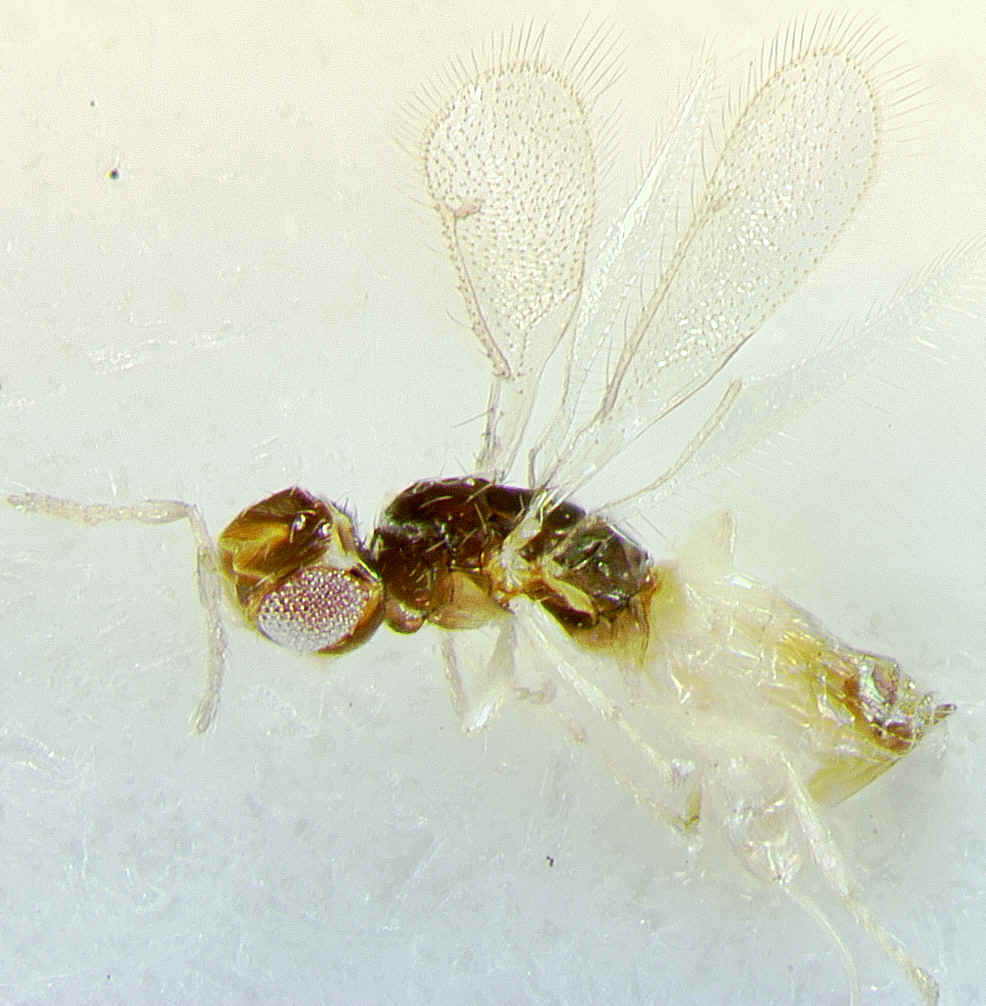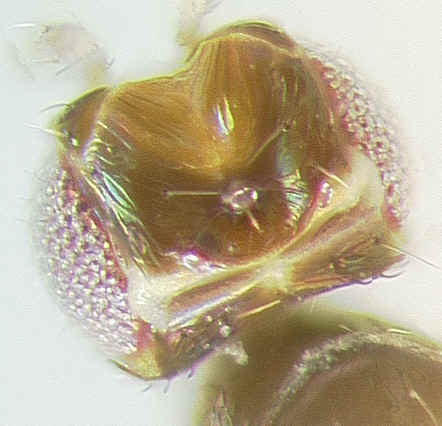
Ceranisus menes (Walker)
return to: Eul 1 Eul 4 eud 1 eul 1 ent 1 ent 5 ent 10 ent 13 ent 16 ent 21 ent 26
Ceranisus
Walker, 1842 comparative info return to: prev home
Complete sulcus present across vertex behind lateral ocelli.
frontal grooves v-shaped, reaching eyes at level of median ocellus; scrobal grooves
reaching transverse groove separately (but rarely discernable because of facial collapse).
Malar sulcus not branched. Flagellum with 1 anellus and 5 additional flagellomeres, in
which 1-3 of them form the club; males of some species with swollen scape; flagellum with
L-shaped (type 2) or elongate (type 3) peg sensilla (so far, I have found only Ceranisus
menes (Walker) to have type 3 sensilla). Notauli sharply bent laterad at their
anterior ends. Definitively included species do not have raised sculpture (S. Trjapitsyn,
personal comm.). Fringe setae of forewing shorter than transverse width of wing (though
usually long relative to other Entedoninae); hind wing pointed apically. Petiole very
small and unsculpted. Compare with: Thripobius, Closterocerus.

Ceranisus menes (Walker)

C. menes vertex
Biology: Larval parasitoids of Thripidae.
Comments: 18 described species. This genus, along with Thripobius, is very difficult to distinguish from other small Entedoninae because the only consistent difference is the presence of the vertex sulcus, which is often obscured if the head is collapsed. These genera appear to be closely related to Closterocerus, Asecodes, and Omphale.
Comparative information:
Thripobius: frontal grooves reaching eyes above level of median ocellus, sometimes reaching vertexal sulcus. Malar sulcus, when visible, forked ventrally.
Closterocerus: Head without sulcus across vertex.
References
Schauff, M.E. 1991. The Holarctic genera of Entedoninae (Hymenoptera: Eulophidae). Contributions of the American Entomological Institute 26.
Trjapitsyn, S.V. & D.H. Headrick. 1995. A revision of the Nearctic species of the thrips-attacking genus Ceranisus Walker (Hymenoptera: Eulophidae). Transactions of the American Entomological Society. 121: 227-248.